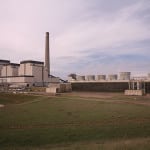SAINT PAUL, MINNESOTA – The newly approved long-range energy plan for Minnesota’s second largest public utility company reflects an exciting agreement reached between Minnesota Power, Clean Energy Organizations, labor unions, industrial customers, and the Boswell coal plant host communities to more quickly transition towards a reliable and carbon free electric system that works for everyone.
Most laudable in Minnesota Power’s Integrated Resource Plan (IRP) approved by the Minnesota Public Utilities Commission (PUC) Tuesday is the utility’s commitment to dramatically increase its investment in renewable energy, including up to 400 megawatts of wind energy, 300 megawatts of regional solar energy and significant energy storage.
The development is an important win for ratepayers and the general public as clean energy is affordable, reliable, and essential to confronting the climate crisis and protecting public health, and was therefore a key component in the agreement reached between CEOs and Minnesota Power in the days prior to the PUC vote.
Other noteworthy components of that agreement included in the newly approved IRP are Minnesota Power’s commitment to stop burning coal at its Boswell 3 coal plant by the end of 2029, as well as to plan for the transmission upgrades and other reliability solutions necessary to keep open the option of retiring Boswell unit 4 by 2030, five years earlier than currently proposed by the utility.
Climate science makes clear that maintaining a livable climate for communities requires an accelerated transition away from fossil-fuel power plants, and we are pleased that Minnesota Power is playing its part in that transition while balancing impacts on the City of Cohasset, as well as the people who live and work there.
The plan also defers final decision on the future of the Nemadji Trail Energy Center (NTEC) in Superior, Wisconsin until a future proceeding. The passage of the Inflation Reduction Act (IRA), which includes massive tax credits for carbon free energy sources, as well as other factors, impacted the analysis of NTEC. We are confident that more time and falling prices for clean energy and energy storage will only further indicate that construction of a $700 million fossil gas plant in the midst of an accelerating climate crisis is not in the public interest.
While a full public interest and ratepayer analysis of NTEC will be reviewed by the Minnesota PUC at a later date, the gas power plant proposal is also awaiting decisions from the State of Wisconsin. Additionally, MCEA, Sierra Club, Honor the Earth, Clean Wisconsin, the Environmental Protection Agency and other parties have raised objections during the environmental review process for a proposed federal loan for the construction of NTEC.
The Commission also asked Minnesota Power to work with a diverse array of stakeholders in advance of its next resource plan, now set to be filed March 1, 2025, including on a societal cost benefit analysis of the utility’s remaining coal and biomass facilities without closure dates – Boswell Unit 4 and Hibbard Renewable Energy Center. This analysis came about in part due to a public health and equity analysis commissioned by the CEOs in this proceeding which found that the air quality-related health impacts of these facilities may be significant and disproportionately affect Native American residents in northern Minnesota.
“We are glad the Minnesota PUC approved our agreement with Minnesota Power that accelerates adoption of clean, renewable energy and speeds up a carbon-free energy future in Minnesota. We are particularly pleased that the utility has committed to stop burning coal at Boswell 3 by 2029 and is willing to explore ways to close Boswell 4 unit earlier than originally proposed. Clean energy is less expensive, reliable, and better for our climate and public health, and we will continue to work with Minnesota Power and push for a rapid transition away from fossil fuels that doesn’t leave anybody behind,” said Evan Mulholland, Healthy Communities Director at the Minnesota Center for Environmental Advocacy.
“Clean Grid Alliance is pleased with the approval of Minnesota Power’s integrated resource plan. Minnesota Power has shown a strong commitment to achieving 100 percent carbon free electricity by 2050 and this plan sets them on the path to achieve that goal. The strong partnerships that emerged in this process shows why robust resource planning is so important. CGA looks forward to working with Minnesota Power as they look to add new wind, solar and battery storage resources in the near future,” said Peder Mewis, Clean Grid Alliance Regional Policy Manager.
“Fresh Energy applauds Minnesota Power’s ambitious plan for expediting wind and solar, and pushing forward its first energy storage projects between 2026 and 2030, bringing the utility to 70% carbon-free generation in 2030. Minnesota’s clean energy landscape is changing fast, thanks in part to commitments from large utilities like Minnesota Power and federal investments such as the Inflation Reduction Act. We’re looking forward to continuing to work with Minnesota Power and the Minnesota Public Utilities Commission on what’s next,” said Allen Gleckner, executive lead, Policy and Programs at Fresh Energy.
“Today’s decision is an exciting step towards building a cleaner energy future for the Northland. Prior to this proceeding, the pollution and disproportionate public health impacts of Minnesota Power’s Hibbard biomass plant in West Duluth were largely under the radar. Now, we have a plan to further analyze the public health impacts of Hibbard with community input and we look forward to ensuring that the most impacted communities in Duluth are at that table,” said Jenna Yeakle, Sierra Club Senior Organizing Representative in Duluth.









